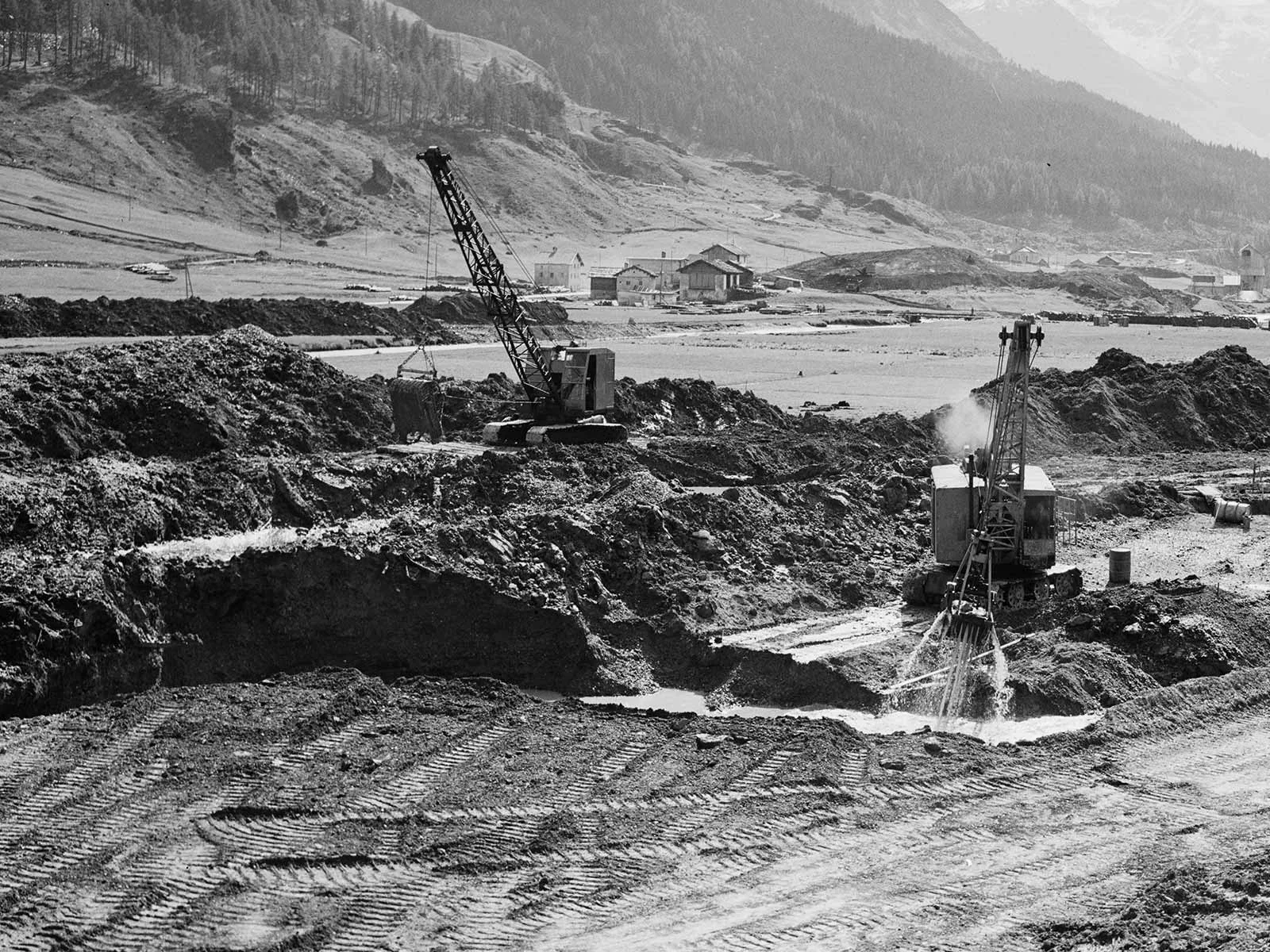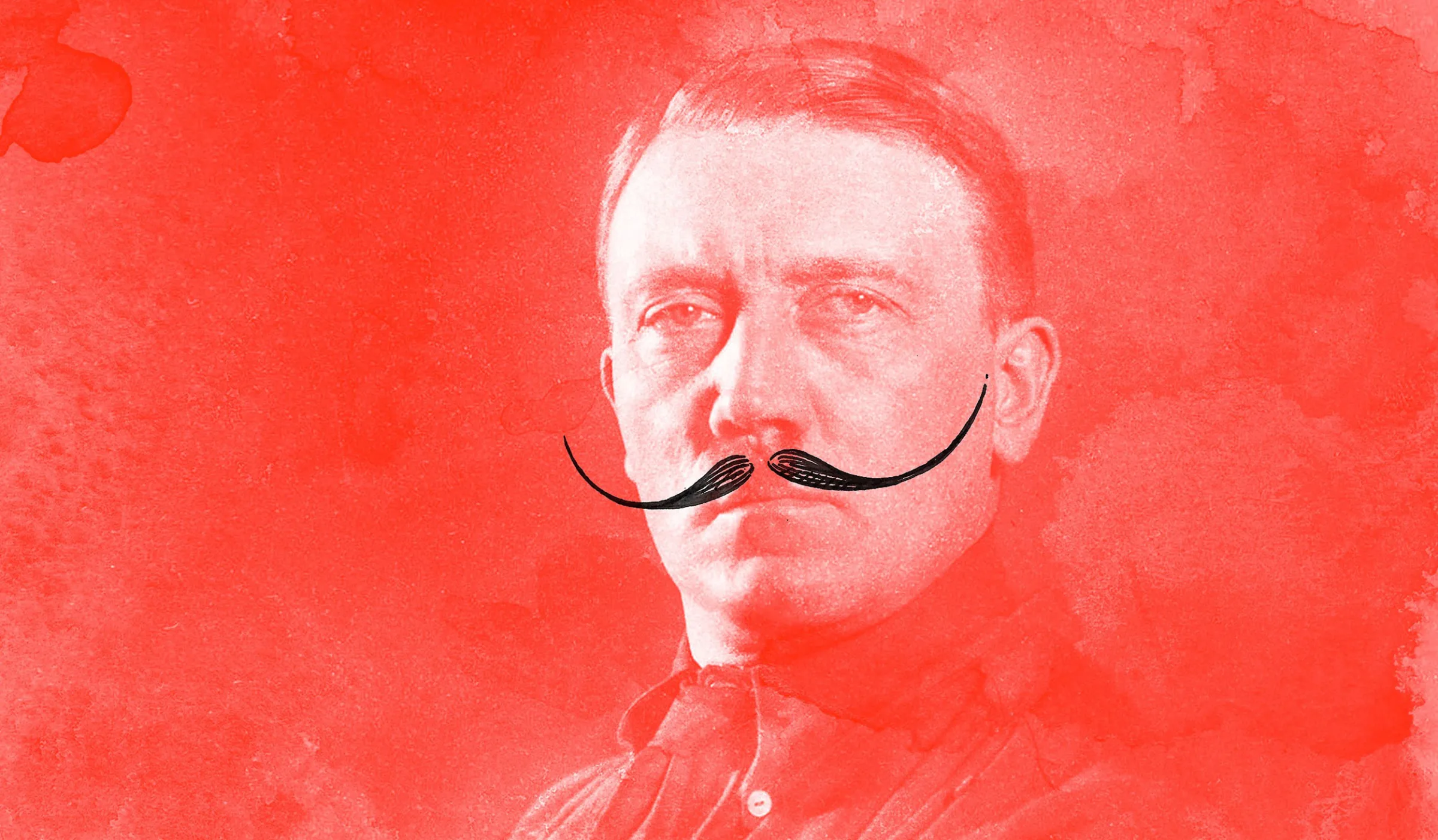
Illustration: Marco Heer
Fighting the Nazis with the mighty pen
With its censorious satirical style, the Nebelspalter made a name for itself early on. Carl Böckli’s caricatures were particularly provocative, and in 1933 they were banned in Germany.
Carl Böckli started working as a freelancer for Swiss satirical magazine Nebelspalter in 1922. Five years later he became the publication’s editor-in-chief, and turned the ailing jokebook into a well-respected critical and satirical magazine. Under the pen name Bö, the trained illustrator commented on world events for more than 35 years. With his caricatures, he came to embody the spiritual resistance to totalitarian ideologies in German-speaking countries in the 1930s and during the Second World War.
Bö’s early caricatures focused on social issues such as poverty and the widespread alcoholism he saw around him. On the cover of the 16 September 1927 issue, he had drinkers and their bottles drowning in a sea of alcohol – above their heads is a poster bearing the words ‘Let us have cheap schnapps!’ The background to this caricature was the upcoming vote on revision of the country’s alcohol laws. The new version of the law proposed to make the distillation of schnapps the prerogative of the government, and prohibit private individuals from making it.
CENSORSHIP OF THE PRESS
With the seizure of power by the National Socialists, press freedom was severely restricted. The Nebelspalter also felt the effects of these restrictions, being banned in Germany from 1933. Switzerland too restricted freedom of the press in 1934. But it wasn’t until 1939 that actual censorship began: by a decision of the Federal Council, the armed forces took over the task of media monitoring. The censorship agency had the power to shut down newspapers or magazines if, in its judgement, they jeopardised the country’s foreign relations.
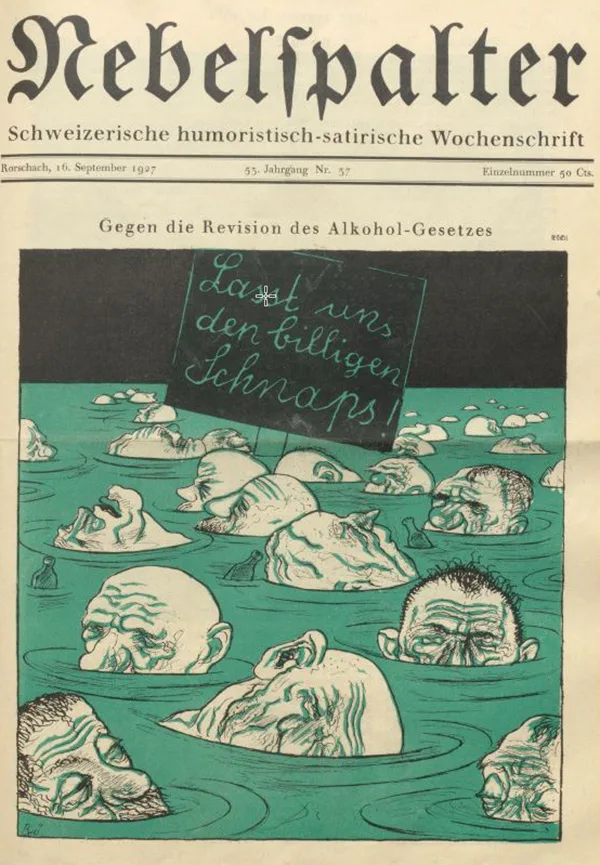
Carl Böckli: ‘Let us have cheap schnapps!’, cover of the Nebelspalter of 16 September 1927.
Nebelspalter Verlag Horn
The Nebelspalter now faced the difficult task of making its position known – without saying anything explicitly. Bö succeeded in this high-wire act by wrapping up his views in subtle imagery and combining his drawings with a minimum of textual commentary. On the cover of the 23 June 1939 issue Bö demonstrated how, as an editor, he muzzled himself every day: ‘Morning workout for editors, brought in since the ban on the SZ am Sonntag: You take a chair / And park your mouth on it!’ The banned newspaper he referred to was the Schweizer-Zeitung am Sonntag, published in Basel.
BETWEEN RESISTING AND ADAPTING
With his caricature of the little Alpine boy in the grip of a set of pincers, for the cover of the issue of 15 January 1942 Bö created a powerful image summing up the position of neutral Switzerland. To highlight the ominous embrace of the warring powers, beneath the drawing he placed four words, brief and concise: ‘Kleiner Kommentar zur Lage’ (A little comment on the situation). As early as 1938 Bö encapsulated, in the figure of the little Alpine boy with his distinctive Sennenchäppi headgear, the ‘Geistige Landesverteidigung’ (‘spiritual defence’ movement in Switzerland). This naive child can say or do cheeky and audacious things that no one else is allowed to do.
The caricature ‘Superneutrality’ on the cover of the 4 June 1942 issue makes clear, in its absurdity, that press censorship can go so far that, in extreme cases, it’s no longer possible to report anything about the events of the war. Reporting is filtered in such a way that it degenerates into empty sentences: ‘…and now the English news: The English news agency reports: nothing to report!’
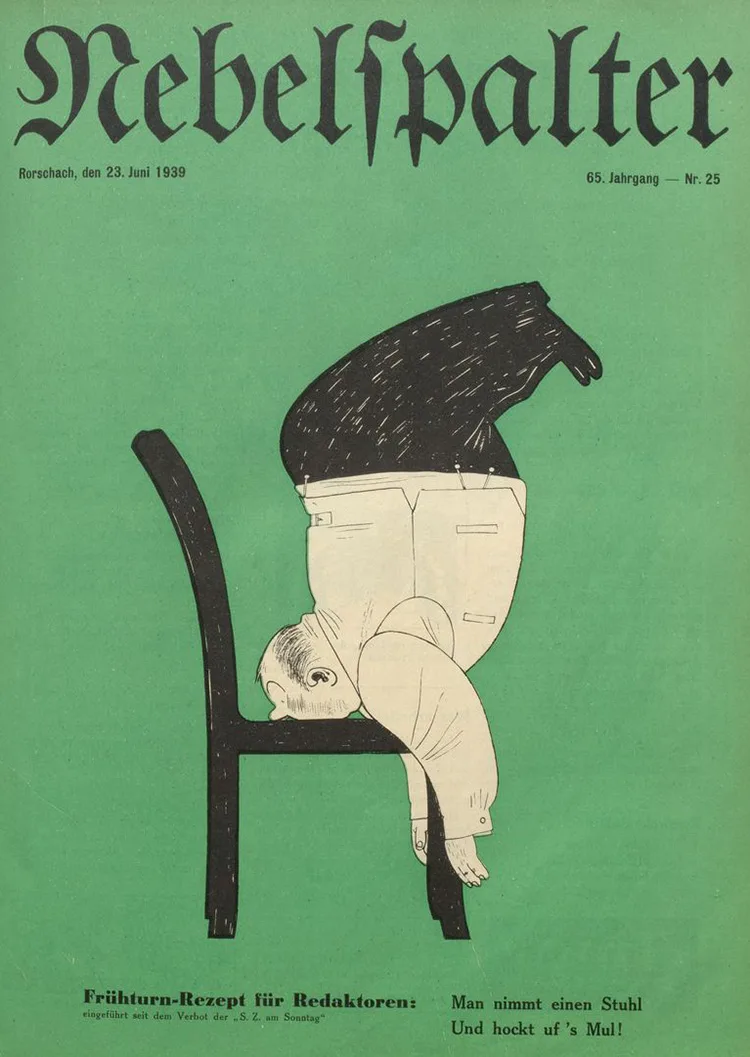
Carl Böckli: Morning workout for editors, cover of the Nebelspalter of 23 June 1939.
Nebelspalter Verlag Horn
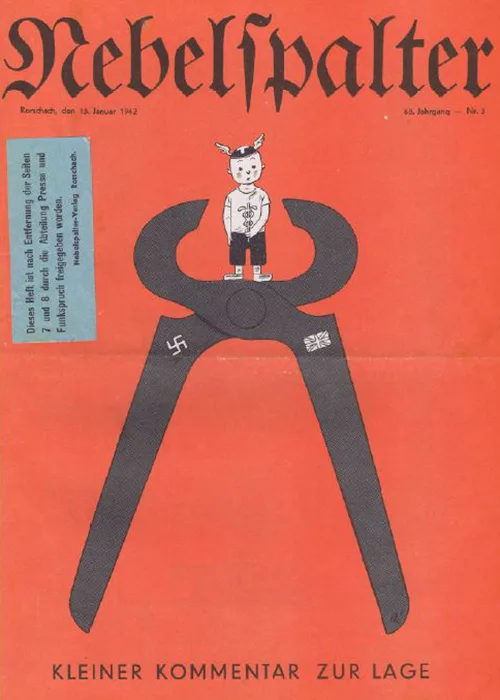
Carl Böckli: A little comment on the situation, cover of the Nebelspalter of 15 January 1942.
Bö-Stiftung im Museum Heiden
BÖ’S HALLMARKS
Bö’s caricatures are characterised by the combination of image and satirical text – mostly verses with a dialectical flavour. His text comments were sometimes shorter during the war years, reflecting the censorship of the times. It makes his drawings all the more incisive.
But with the sleeping Alpine boy on the 21 October 1943 cover, the verses return. ‘Pfuus Büebli pfuus…’ [‘Sleep, little boy, sleep…’], Bö advises the sleeper. Since there is currently neither voting nor elections, nobody notices if someone is missing. The sardonically soothing verse alludes to the Federal Council’s regime of full powers during World War II. From the end of August 1939 onwards, the Federal Council governed by means of emergency decrees, and Parliament no longer issued very many laws. From September 1939 to May 1945, a total of just seven referenda were placed before the people; in 1943, not a single one.
But it wasn’t just the Sennenbub who slept through civic duties and even political events. On the cover of the 13 September 1945 issue, he climbs a ladder to rouse a uniformed man from his slumber: ‘Ganz im Vertraue, Herr Oberscht, de Chrieg isch uus!’ [‘In total confidence, Colonel, the war is over!’]. This is probably an allusion to the long interval between Germany’s surrender on 8 May 1945 and the subsequent termination of Switzerland’s active service on 20 August 1945.
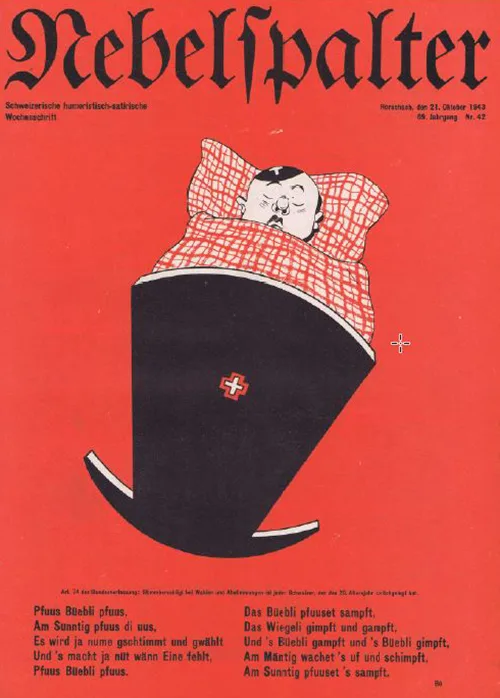
Carl Böckli: ‘Sleep, little boy, sleep…’, cover of the Nebelspalter of 21 October 1943.
Bö-Stiftung im Museum Heiden

Carl Böckli: ‘In total confidence…’, cover of the Nebelspalter of 13 September 1945.
Nebelspalter Verlag Horn
Made in Witzerland
FORUM OF SWISS HISTORY SCHWYZ
until 24 January 2021
In the temporary exhibition ‘Made in Witzerland’, the Swiss satirical magazine Nebelspalter gets its own chapter. It goes without saying that the exhibition includes the numerous caricatures by Carl Böckli.


